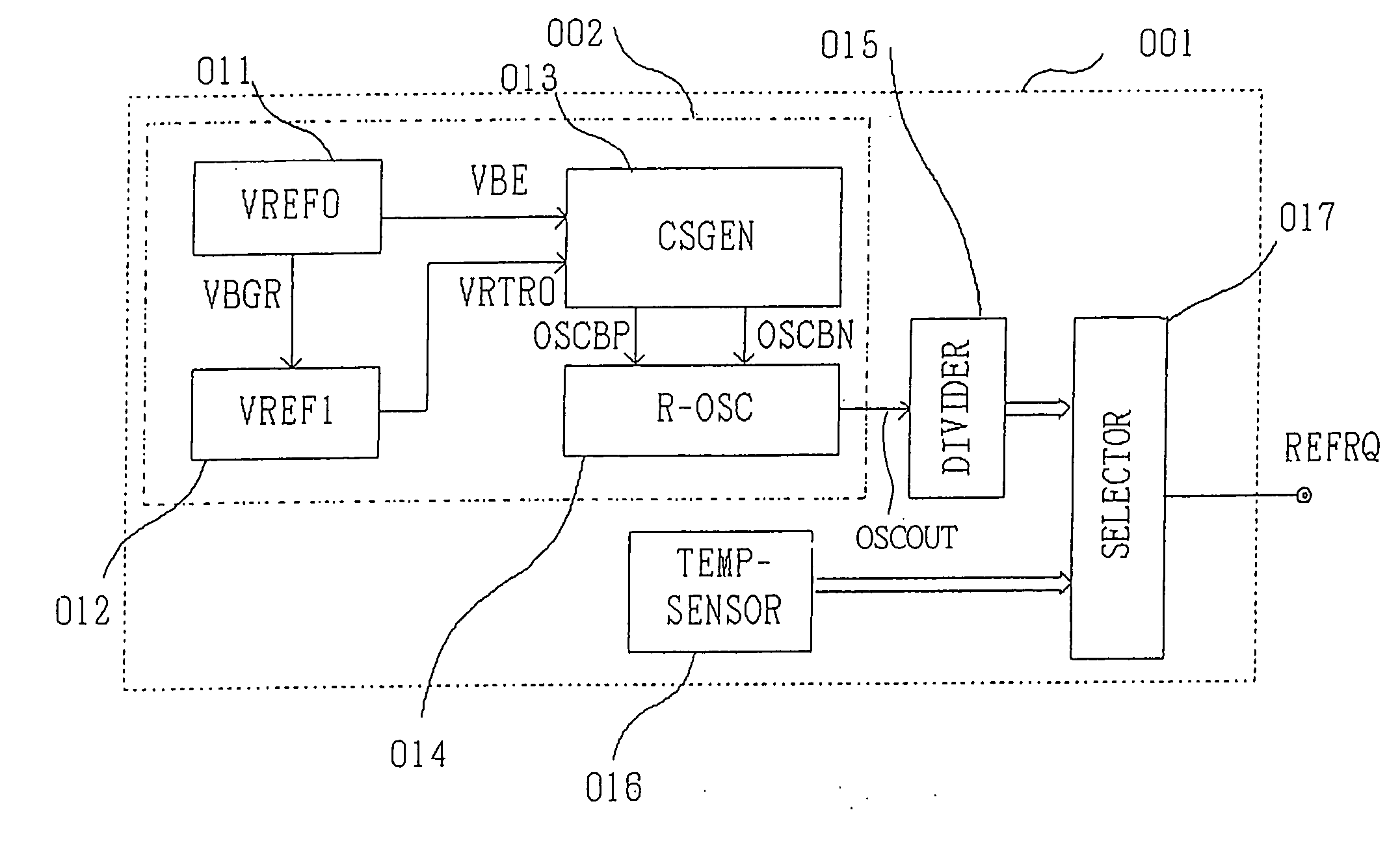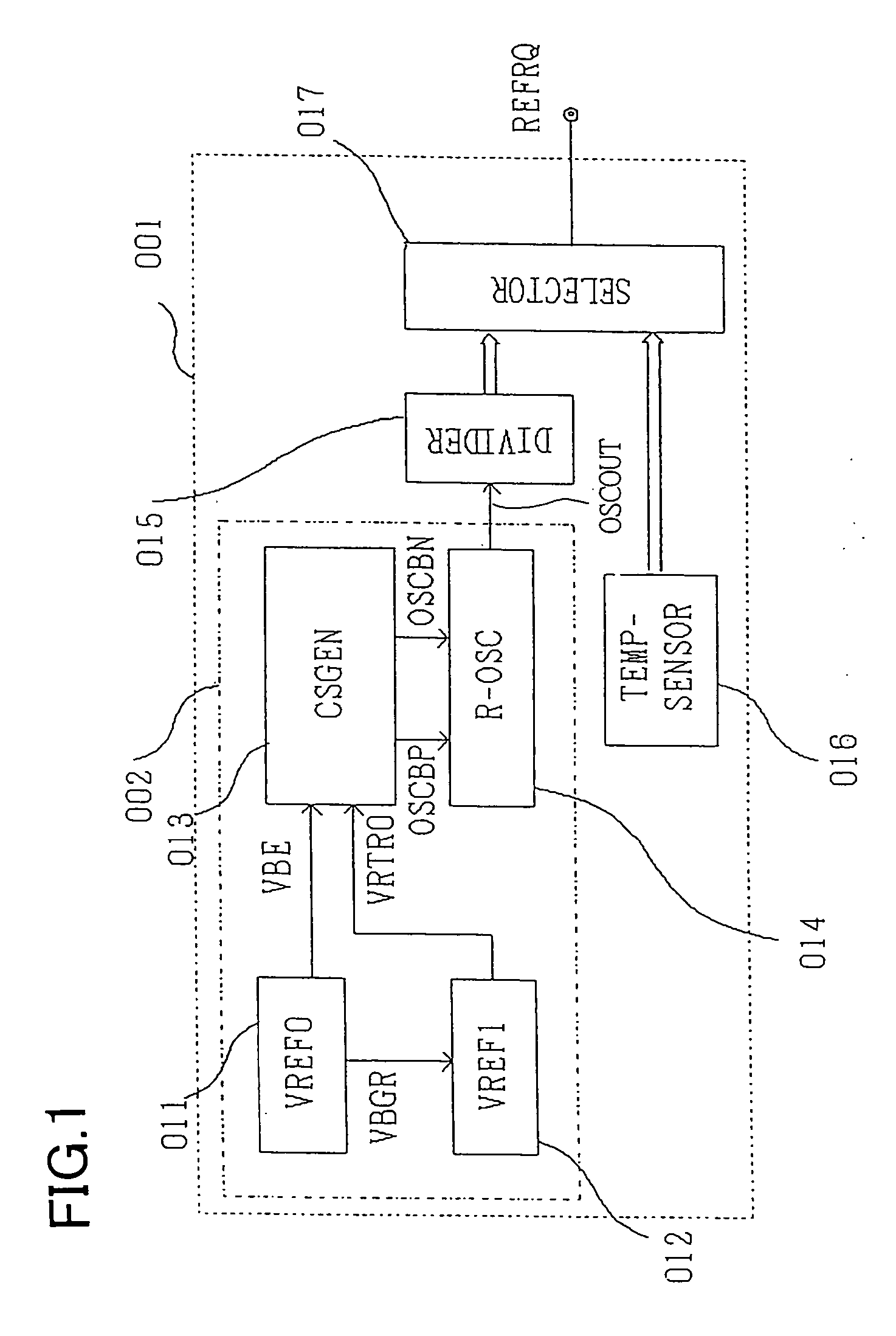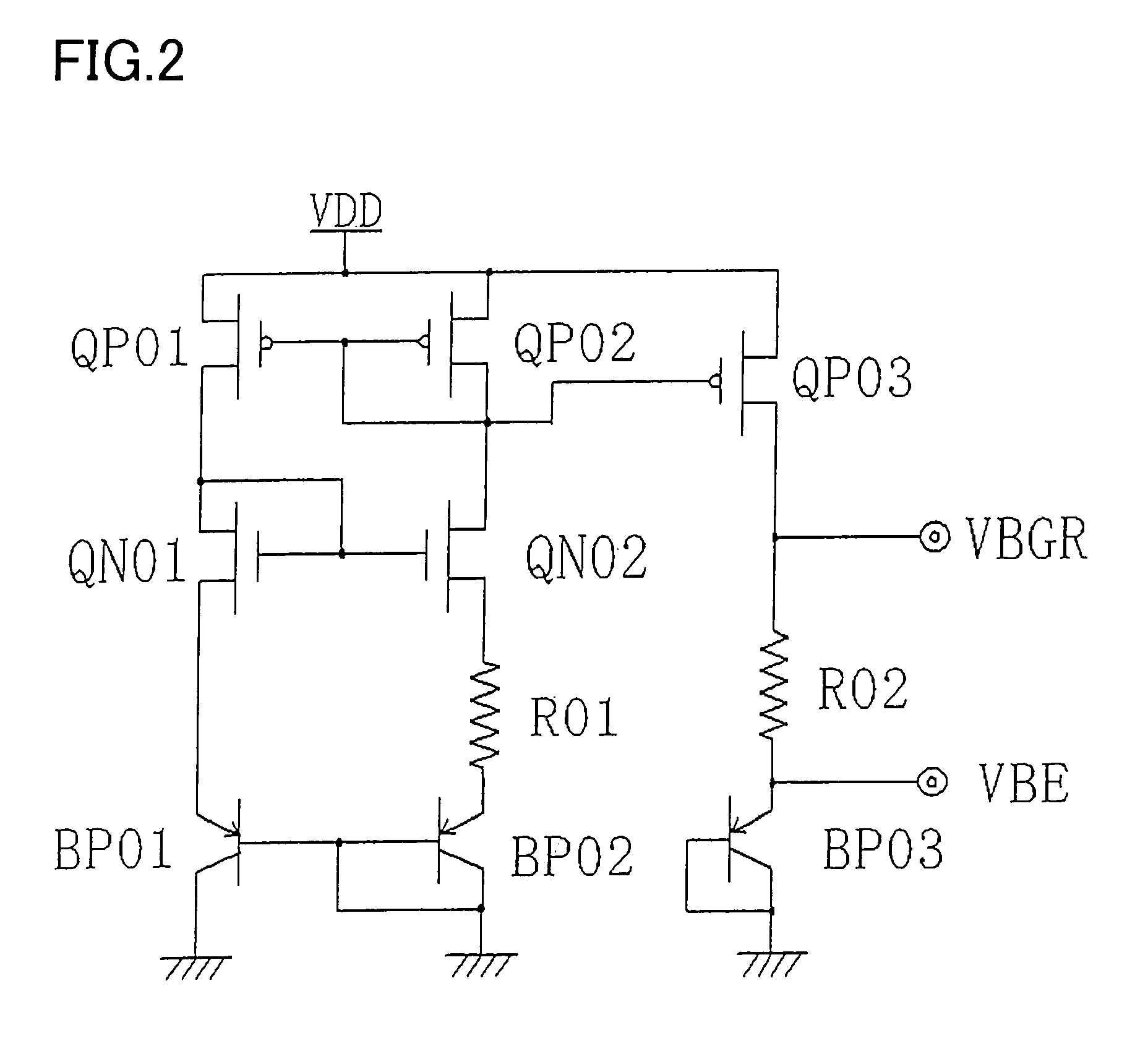Refresh period generating circuit
- Summary
- Abstract
- Description
- Claims
- Application Information
AI Technical Summary
Benefits of technology
Problems solved by technology
Method used
Image
Examples
Embodiment Construction
[0041] A preferred embodiment of the invention will specifically be described below with reference to accompanying drawings. FIG. 1 illustrates a configuration of a refresh period generating circuit of this embodiment. A refresh period generating circuit 001 as shown in FIG. 1 is provided with an oscillation circuit 002 such that the oscillating frequency has analog-form temperature dependence, a dividing circuit (DIVIDER) 015, a temperature sensor (TEMP-SENSOR) 016 and a frequency selector (SELECTOR) 017. The refresh period generating circuit 001 outputs a refresh reference signal REFRQ that is a reference of refresh of the DRAM cell.
[0042] The analog oscillation circuit 002 basically has the same configuration as in FIG. 9, and is comprised of a band-gap type reference voltage generating circuit (VREF0) 011, a comparative voltage generating circuit (VREF1) 012, a current control signal generating circuit (CSGEN) 013 with positive temperature dependence, and a ring oscillator (R-O...
PUM
 Login to View More
Login to View More Abstract
Description
Claims
Application Information
 Login to View More
Login to View More - R&D
- Intellectual Property
- Life Sciences
- Materials
- Tech Scout
- Unparalleled Data Quality
- Higher Quality Content
- 60% Fewer Hallucinations
Browse by: Latest US Patents, China's latest patents, Technical Efficacy Thesaurus, Application Domain, Technology Topic, Popular Technical Reports.
© 2025 PatSnap. All rights reserved.Legal|Privacy policy|Modern Slavery Act Transparency Statement|Sitemap|About US| Contact US: help@patsnap.com



